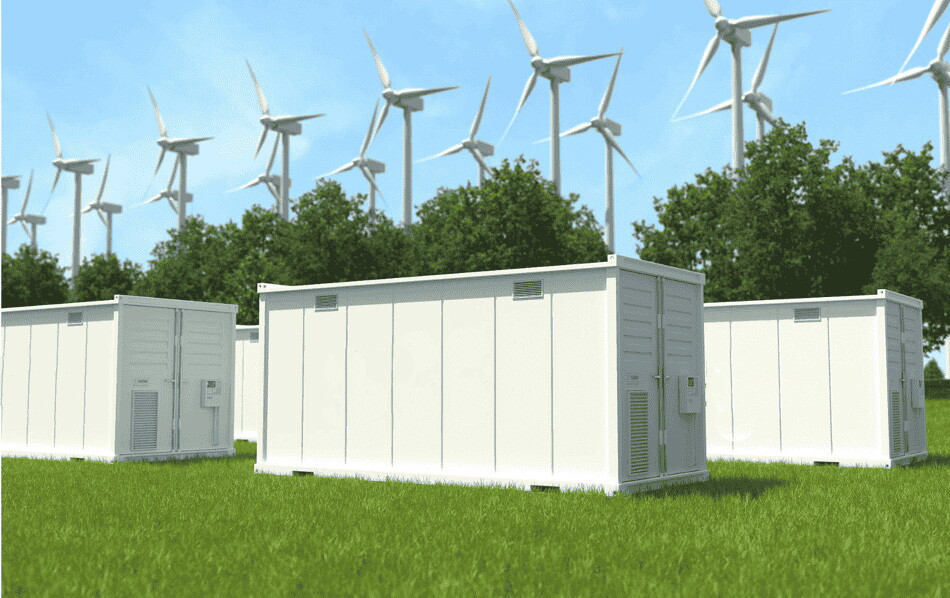Renewable energy sources such as solar and wind energy are gaining momentum in the effort to reduce global warming potentials (GWP). However, traditional energy sources like oil and coal still dominate the market. Nonetheless, renewable energy has witnessed significant growth, largely due to advancements in energy storage and transportation technologies. The conversion of renewable energy into chemical energy, such as hydrogen and batteries, enables energy systems to provide flexible usage. The article will introduce sensors and detection solutions in energy storage systems.

Chemical energy storage is the prevailing trend, with estimates projecting its market value to reach trillions by 2025 and 2030, respectively. This includes hydrogen energy storage and battery storage, notably lithium-ion batteries, owing to their minimal spatial and resource constraints, high energy density, and adaptability. However, ensuring energy security has emerged as a new challenge, primarily due to the inherent instability of chemical batteries, which are prone to overheating, leading to fires and even explosions, resulting in economic losses, casualties, and environmental issues. To address this, security management systems have been developed to monitor the operational conditions of ESS.
Accidents involving energy storage batteries can have complex causes. Lithium-ion storage facilities utilize high-energy batteries coupled with highly flammable electrolytes, making them susceptible to rapid ignition and explosion under worst-case scenarios. The quality of batteries available on the market varies widely, from technology giants to small suppliers, posing potential risks such as battery aging as their lifespan approaches. Externally, factors such as overloading, short circuits, and heat can cause instantaneous temperature and pressure spikes within the battery, leading to fires and explosions. Over-discharging of batteries depletes chemicals inside, producing flammable gases that can exacerbate accidents. Environmental conditions, such as extreme temperatures, water ingress, and dust contamination, also impact battery safety to varying degrees. Moreover, professional station management is crucial for handling various issues and preventing them from escalating into major accidents.
Enhancing Energy Storage System (ESS) safety involves three key components: battery layout, safety monitoring, and fire suppression. By partitioning battery clusters into packs, heat transmission is minimized, containing potential risks within a confined space.
A Battery Management System (BMS) monitors and optimizes circuit performance in real-time, disconnecting circuits if necessary. Modern BMS senses voltage, current, and temperature, ensuring comprehensive safety.
Firefighting systems are vital. These systems cool affected areas during a fire, preventing its spread. Aerosol extinguishers rapidly douse flames, enhancing safety measures.
Early risk detection relies on sensors and detectors. Current and voltage sensors monitor fluctuations, while gas sensors detect overheating or leaks. Pressure, temperature, humidity, and flame indicators are also monitored. Connected to security systems, detectors trigger early alarms and activate fire protection.
Safety remains paramount for the energy storage industry's growth. Employing multi-sensor fusion technology and establishing comprehensive safety protocols are crucial for managing evolving risks in this dynamic sector.

Chemical energy storage is the prevailing trend, with estimates projecting its market value to reach trillions by 2025 and 2030, respectively. This includes hydrogen energy storage and battery storage, notably lithium-ion batteries, owing to their minimal spatial and resource constraints, high energy density, and adaptability. However, ensuring energy security has emerged as a new challenge, primarily due to the inherent instability of chemical batteries, which are prone to overheating, leading to fires and even explosions, resulting in economic losses, casualties, and environmental issues. To address this, security management systems have been developed to monitor the operational conditions of ESS.
Accidents involving energy storage batteries can have complex causes. Lithium-ion storage facilities utilize high-energy batteries coupled with highly flammable electrolytes, making them susceptible to rapid ignition and explosion under worst-case scenarios. The quality of batteries available on the market varies widely, from technology giants to small suppliers, posing potential risks such as battery aging as their lifespan approaches. Externally, factors such as overloading, short circuits, and heat can cause instantaneous temperature and pressure spikes within the battery, leading to fires and explosions. Over-discharging of batteries depletes chemicals inside, producing flammable gases that can exacerbate accidents. Environmental conditions, such as extreme temperatures, water ingress, and dust contamination, also impact battery safety to varying degrees. Moreover, professional station management is crucial for handling various issues and preventing them from escalating into major accidents.
Enhancing Energy Storage System (ESS) safety involves three key components: battery layout, safety monitoring, and fire suppression. By partitioning battery clusters into packs, heat transmission is minimized, containing potential risks within a confined space.
A Battery Management System (BMS) monitors and optimizes circuit performance in real-time, disconnecting circuits if necessary. Modern BMS senses voltage, current, and temperature, ensuring comprehensive safety.
Firefighting systems are vital. These systems cool affected areas during a fire, preventing its spread. Aerosol extinguishers rapidly douse flames, enhancing safety measures.
Early risk detection relies on sensors and detectors. Current and voltage sensors monitor fluctuations, while gas sensors detect overheating or leaks. Pressure, temperature, humidity, and flame indicators are also monitored. Connected to security systems, detectors trigger early alarms and activate fire protection.
Safety remains paramount for the energy storage industry's growth. Employing multi-sensor fusion technology and establishing comprehensive safety protocols are crucial for managing evolving risks in this dynamic sector.
Previous: Eight Future Directions of Sensor Trends
Next: Sensor for Detecting Methane and Propane Gas Leaks





